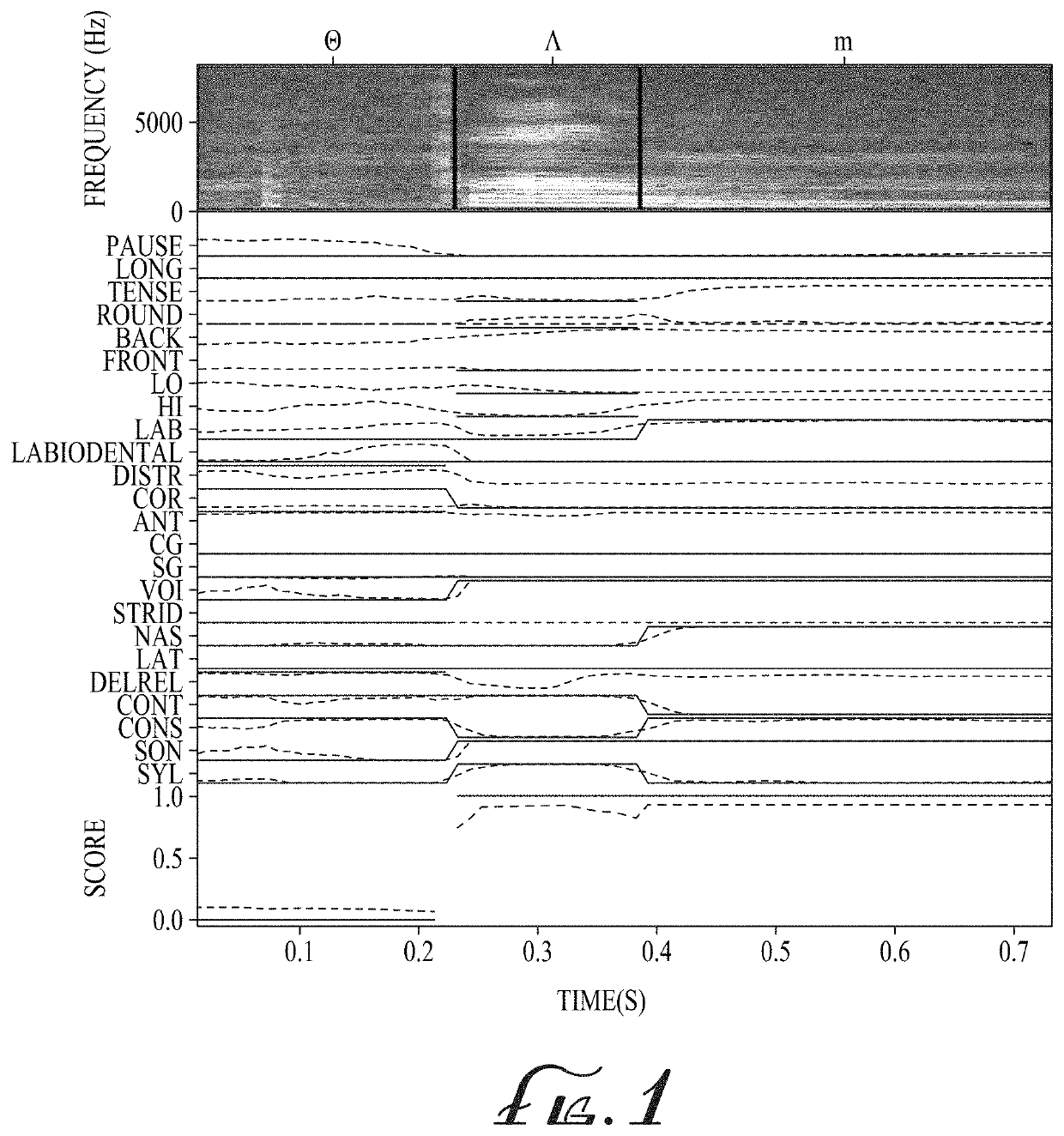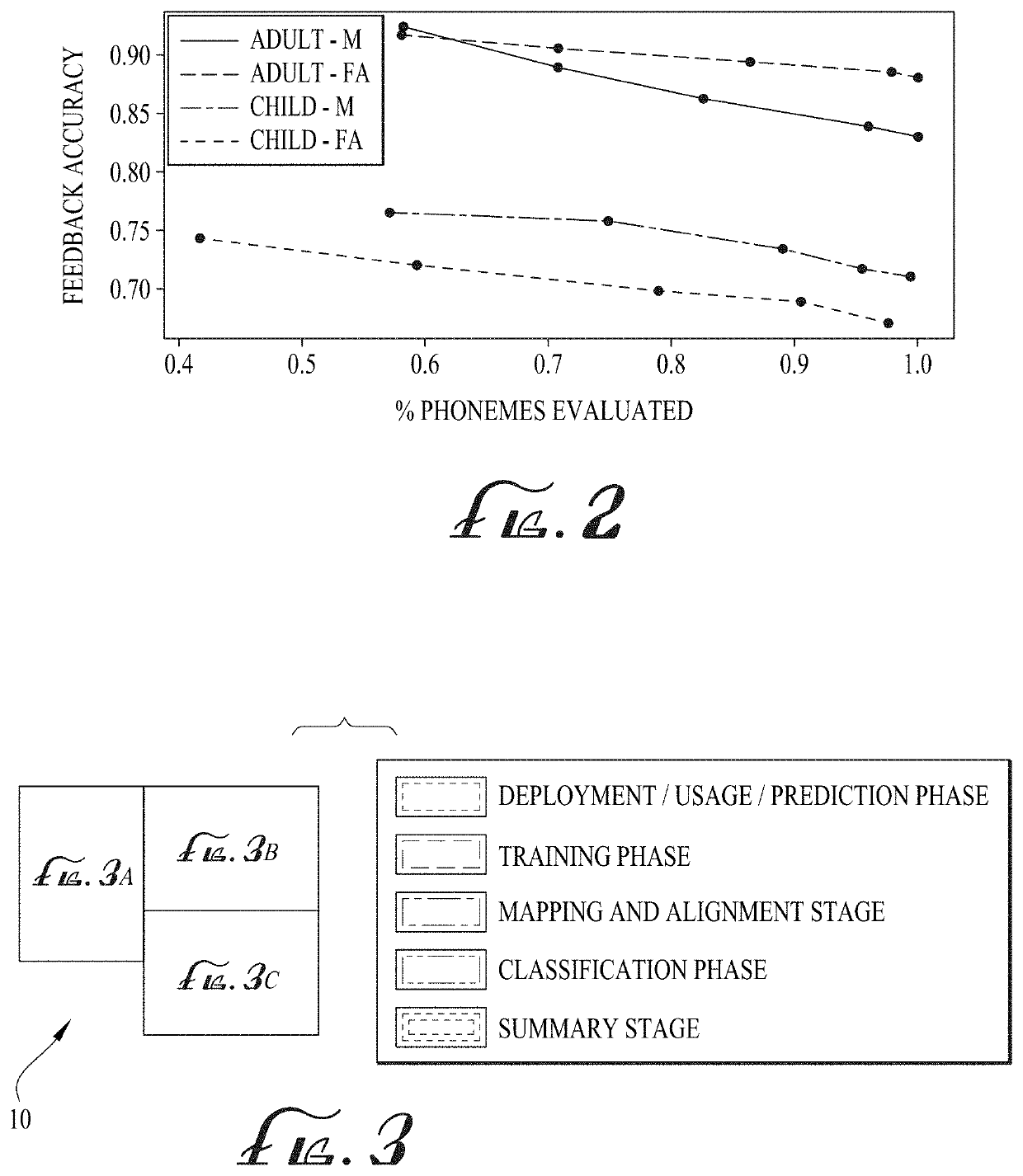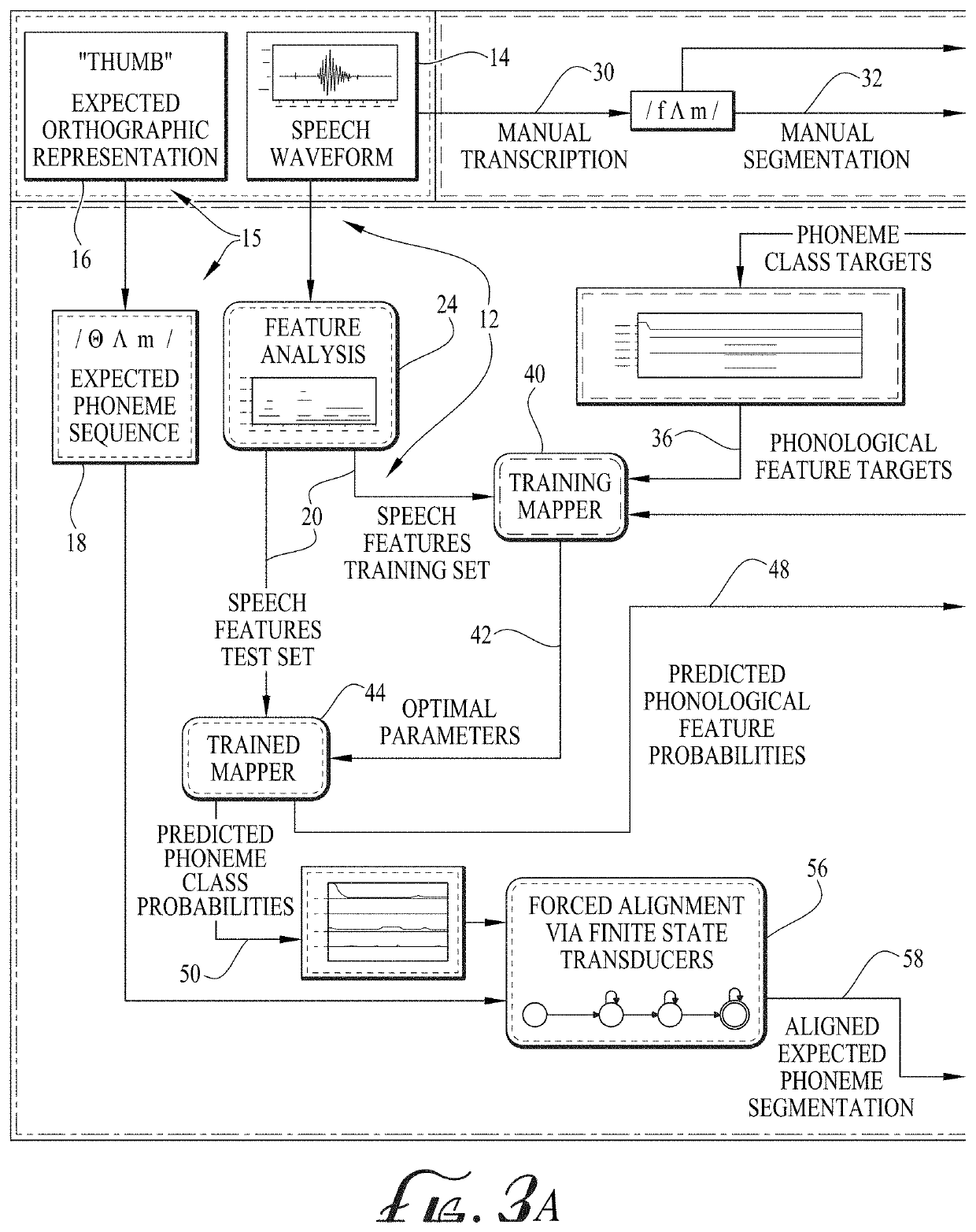Mispronunciation detection with phonological feedback
a technology of phonological feedback and automatic pronunciation, applied in the field of phonological feature-based automatic pronunciation analysis and phonological feedback system, can solve the problems of not being able to provide the appropriate intensity of treatment for all cases, children with these disorders experience difficulty in academic settings, and subsequent long-term difficulty in processing and interpreting languag
- Summary
- Abstract
- Description
- Claims
- Application Information
AI Technical Summary
Benefits of technology
Problems solved by technology
Method used
Image
Examples
Embodiment Construction
[0022]This disclosure describes embodiments for implementing a pronunciation analysis and phonological feedback system akin to a CAPT system, but with wide applicability. Some embodiments include a convolutional neural network (CNN) that maps acoustic to phonological features and a mispronunciation detection and feedback system. An example experiment is described in which an embodiment is evaluated on a target user-group of children having SSDs. Also described is an embodiment of a mispronunciation detection system that uses phonological feature probabilities as output by a CNN-based acoustic-to-phonological feature mapping system as input to a DNN-based classifier which predicts mispronounced phonemes with 97% accuracy for adults and 77-80% accuracy for children. Using the output of the mispronunciation classifier, along with the predicted and expected phonological feature values, a leading problematic phonological feature is identified with 87-91% accuracy for adults and 67-73% ac...
PUM
 Login to View More
Login to View More Abstract
Description
Claims
Application Information
 Login to View More
Login to View More - R&D
- Intellectual Property
- Life Sciences
- Materials
- Tech Scout
- Unparalleled Data Quality
- Higher Quality Content
- 60% Fewer Hallucinations
Browse by: Latest US Patents, China's latest patents, Technical Efficacy Thesaurus, Application Domain, Technology Topic, Popular Technical Reports.
© 2025 PatSnap. All rights reserved.Legal|Privacy policy|Modern Slavery Act Transparency Statement|Sitemap|About US| Contact US: help@patsnap.com



